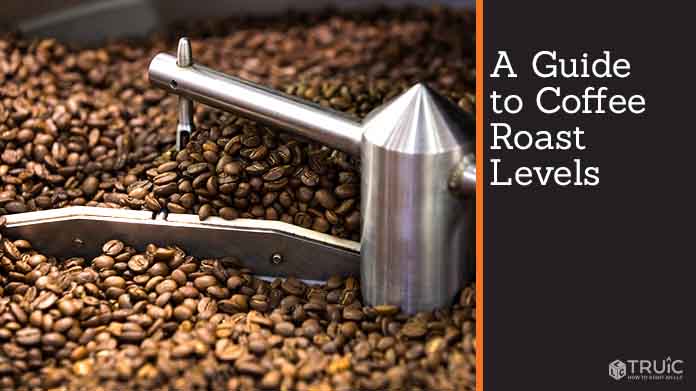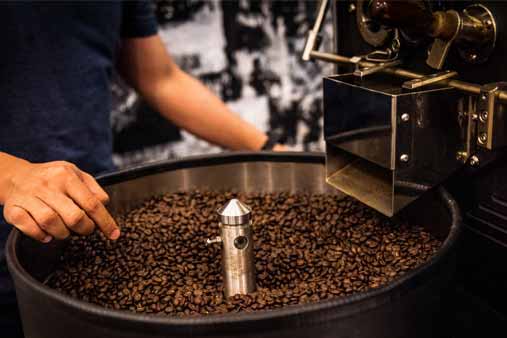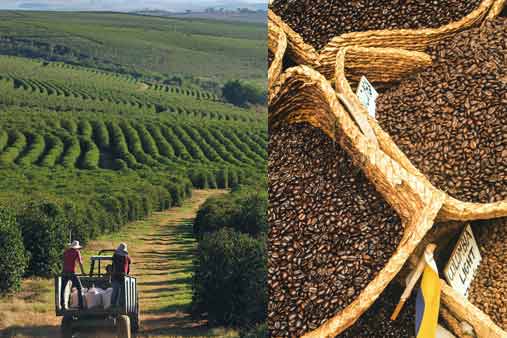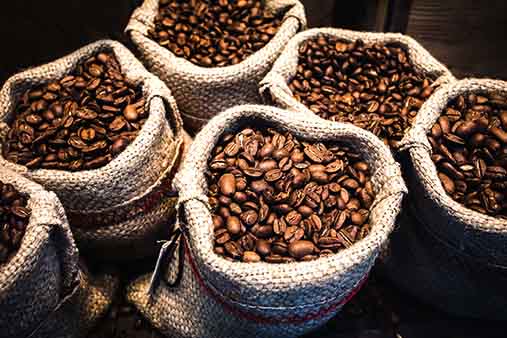A Guide to Coffee Roast Levels
Roasting coffee is skill, art, and science that requires years of practice and experience to master. As a coffee buyer and consumer, however, it can take far less time to understand the different roast levels and find the one you enjoy most. If you purchase specialty coffees, for example, you’ll often find light and medium roasts chosen to complement the beans’ natural flavors and aromas.
Recommended: Read our full, in-depth How to Start a Coffee Shop Business guides, inspired by coffee professionals, they will help make your coffee dreams real, from sourcing beans to hiring baristas, choosing a POS system, forming an actual company, and everything in between.

Common Roast Levels
Coffee comes in four main roast levels: light, medium, dark, and darker than dark. Within these four levels, you’ll find varying degrees as well. Minimal standardization of roast levels across the coffee industry also leads many roasters to create their own names and definitions for their different roast levels. For buying purposes, this list includes the common names for each roast level along with the various degrees within them.
If you need help branding your coffee business, try using our Free Coffee Shop Logo Maker. Our free tool will help you brand your coffee business with a unique logo to make your small business stand out.
Light Roast
Intended to preserve a coffee bean’s natural aromas and flavors, light roasts represent the preferred choice of most of the specialty coffee community. They also tend to have a brighter flavor profile than darker roasts. With a dry, not oily, texture, these beans typically reach about 350 to 400 degrees Fahrenheit and just barely obtain the first-crack stage.
Roasters typically refer to varying degrees of light roasts as:
- Light City
- Half City
- Cinnamon
Medium Roast
While medium roasts still preserve a coffee bean’s natural aromas and flavors, they usually replace the brightness produced in a light roast with a sweet caramelization created by a longer roast time. This longer roast time also reduces the acidity and bright notes typically found in light-roast coffees. These beans remain fairly dry and rarely look oily. Raised to temperatures of between 400 and 430 degrees Fahrenheit, they typically pass the first-crack stage while never fully reaching the second crack.
Roasters typically refer to varying degrees of medium roasts as:
- City
- American
- Breakfast
Dark Roast
At this level, the taste of the roast itself replaces the coffee bean’s naturally occurring aromas and flavors. This creates a bold, heavier flavor profile with low acidity. With an oily, dark brown appearance, these beans normally reach the second-crack stage at temperatures of between 430 and 450 degrees Fahrenheit.
Roasters typically refer to varying degrees of dark roasts as:
- Full City
- Vienna
Darker that Dark Roast
Coffees referred to as New Orleans, Italian, French, and continental feature beans roasted to such a dark level that no trace of the coffee’s original flavor remains. These beans have a high oil content, a glossy appearance, and typically taste ashy. Specialty coffee shops don’t use this roast level.
The Caffeination Myth
You’ve likely heard the common belief that dark roasts, with their bold flavor profile, contain higher caffeine levels than other roasts. In fact, light roasts contain slightly more caffeine than dark roasts. This is due to a difference in bean density. The longer a bean roasts, the lower its overall density. That means a dark-roasted coffee bean weighs less and therefore contains less caffeine.
Measuring coffee by weight corrects this imbalance. Only when you measure coffee by volume (e.g., by scoops) does this minimal difference in caffeine level remain, which most people barely notice. If you want a coffee with more caffeine, the only factors that can make a noticable difference include dosage and preparation.
The Roasting Process
Technological advances in roasting equipment changed the coffee-roasting process by adding automated features to monitor and control each step. However, the traditional roasting method — prior to the availability of automated roasting equipment — requires skill in both sight and sound in order to judge when to stop this process. Here’s an overview of how expert roasters use both of those skills:
Sight
Roasting changes both the color and texture of coffee beans. These visual cues can help indicate the beans’ progress through the roasting process. For example, lightly roasted coffees look slightly brown with no oil on the surface while dark-roasted coffees appear dark brown and shiny. Experienced roasters use their sight to help determine a coffee bean’s exact point in the roasting process.
Sound
During roasting, coffee beans produce two audible cracking noises. These cracks signify key stages of the roasting process. For example, medium and light roasts finish sometime between the first and second cracks while dark roasts finish after the second crack.
The first crack occurs around 385 degrees Fahrenheit after enough of the moisture in the coffee bean evaporates and causes the bean to expand and crack. This represents the first sign of the beginning of a light roast. The second crack occurs between 435 and 437 degrees Fahrenheit after oils in the coffee bean move toward the surface. This marks the beginning stage of a dark roast.
A Brief History of Coffee Roasting
So how did roasting coffee evolve into a complex, modern industry? While the practice of roasting coffee beans started roughly 1,000 years ago, humans didn’t develop coffee roasting technology until the 1400s. It took another 400 years — until sometime in the 1800s — before companies started roasting beans in massive quantities and selling pounds of bagged coffee as a commodity. During the 1900s, sales of commercially roasted coffee surpassed coffees roasted from home and kick-started the modern coffee industry.
Today, commercially roasted coffee represents something altogether more complex. As micro-roasters — known for their artfully roasted beans — grow increasingly common, the days of using dark roasts for any type of green coffee bean are long gone. For modern roasters, it’s more important than ever to develop the skills to determine the best roast level for the beans at hand.
Tips for Choosing the Right Roast Level
Roast levels play an important role in a coffee’s flavor and aroma. However, choosing a light roast doesn’t necessarily guarantee you’ll always enjoy the coffee’s natural flavors. Here are four tips to help you decide on the right roast for your coffee:
- If you prefer coffee with lower acidity levels and fewer bright notes, then opt for a medium or medium-dark roast.
- To bring out the brightest and most powerful naturally occurring flavor notes in your coffee, opt for a light roast.
- Dark roasts can provide a crowd favorite, so don’t hesitate to try them. Consider using a blend rather than a single origin for this.
- For unbalanced coffees, consider a blend of several origins at a medium roast. Combining different flavor notes with the roasty flavor of a medium roast may just create a best seller.
Still trying to decide whether or not you should operate your own roastery? Check out our Coffee Roaster Business Idea.


